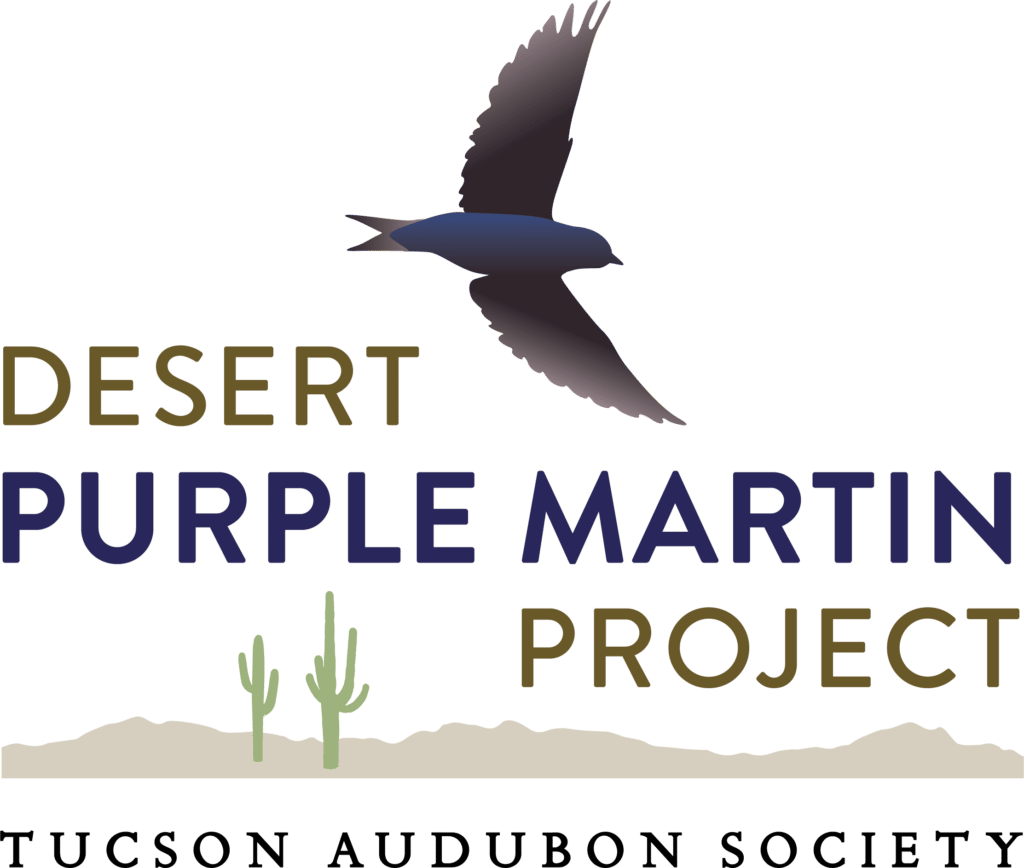Protect Birds & Their Habitats
Birding
Protect Birds & Their Habitats
Birding

Purple Martin by Scott Olmstead
Charismatic, large swallows, Purple Martins are a beloved and iconic nestbox species in the eastern half of the United States. Did you know they can be found here as well? The Desert Purple Martin (Progne subis hesperia) is a distinct subspecies that times its nesting to monsoon abundance and nests almost exclusively in saguaros or other large columnar cacti. These are “wild” martins that use naturally occurring cavities, while the eastern subspecies is said to be entirely reliant on human-made nestboxes. Desert Purple Martins are extremely understudied with large gaps in knowledge about their nesting, migration, and wintering grounds.
Tucson Audubon has launched a study on these fascinating birds—The Desert Purple Martin Project—and you can participate! Email Jennie MacFarland at jmacfarland@tucsonaudubon.org with questions.
The goal of Tucson Audubon’s Desert Purple Martin Project is to document saguaros and specific nesting holes and note their height and orientation. Documenting breeding behavior is another goal of the study this year and into the future. Tucson Audubon could not have launched this project without the amazing help of birders and volunteers who have reported sightings. Thank you!
The Desert Purple Martin project partners include Purple Martin Conservation Association, Northern Arizona University, University of Arizona, and Instituto Butantan (Brazil). Our work is made possible by the Wildlife Conservation Society’s Climate Adaptation Fund, the Disney Conservation Fund, private donations, Purple Martin Conservation Association, Arizona Game & Fish, North American Bluebird Society, and New York State Bluebird Society.
Nesting Habits
Desert Purple Martins have a very different strategy for nesting than the rest of the species. They have never been documented using human made nesting structures and nest almost exclusively in cavities in saguaros in Arizona or in cardon cactus in Mexico. According to the Arizona Breeding Bird Atlas, Desert Purple Martins have the following breeding time frames: They become common in breeding areas around mid-May and are often observed defending nesting saguaros throughout June. Observations of birds carrying nesting material in June seem to be linked to nest site investigation and guarding behavior of preferred saguaros instead of actual nesting. They don’t lay eggs until early or mid July based on observations in the Tucson area. Young have been detected in nests from July 30 to August 21.
Migration
The Desert Purple Martins have a very different migration pattern than other subspecies. There are still scientific knowledge gaps about the migration routes and wintering areas for Desert Purple Martins, but they arrive much later in the U.S. than other subspecies and seem to be timing their arrival to take advantage of our monsoon abundance for their nesting.
Late August into September, Desert Purple Martins begin to gather into larger groups and prepare for their fall migration. Large groups have been documented gathering together in the evenings to communally roost in the Tucson area and Tucson Audubon will be soliciting observations of this behavior in late summer into autumn. By early October, many of the Purple Martins have left Arizona but some are frequently seen in smaller numbers into late October.